Four Ball Mills Mess
Other Tutorials:
- Siteswap: 4
- Difficulty (1-10): 8
- Prerequisites: Mills Mess, Reverse Fountain
- Related Tricks: Five Ball Mills Mess
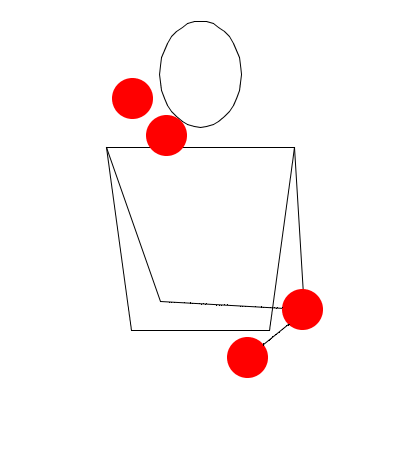
The Four Ball Mills Mess is
just as it sounds: a four ball version of the popular Mills Mess pattern.
However, unlike its little brother, the Four Ball Mills Mess is built off of
the Fountain, therefore the balls never actually switch hands. The Four Ball
Mills Mess is significantly harder to learn the the regular Mills Mess, and
it can take months of practice to achieve a clean and sustainable pattern.
To begin learning the Four Ball Mills Mess, start with two
balls in your dominant hand, and one ball in your non-dominant hand. Cross
your dominant hand over your non-dominant hand, and then make a throw from
your dominant hand in the direction of your non-dominant hand. As you are
making that throw, uncross your arms, throwing the ball in your non-dominant
hand at the moment when your arms are fully uncrossed. That ball should
travel in the same direction as the first ball. Once that throw has been
made, recross your arms, this time with your non-dominant hand on top.
Up to this point, these throws and arm movements are
identical to the standard Mills Mess. There should be two balls in the air
at this point, and the first ball should be close to your hands now. You
will find yourself naturally wanting to catch the first ball with your
non-dominant hand, which is now on top, since that most closely matches the
three ball Mills Mess. However, you must overcome that desire and instead
throw the last ball in your dominant hand under the arm of your dominant
hand, clearing space for your dominant hand to catch the first ball. The
second ball should be caught by your non-dominant hand, and the third ball
should be caught by your dominant hand.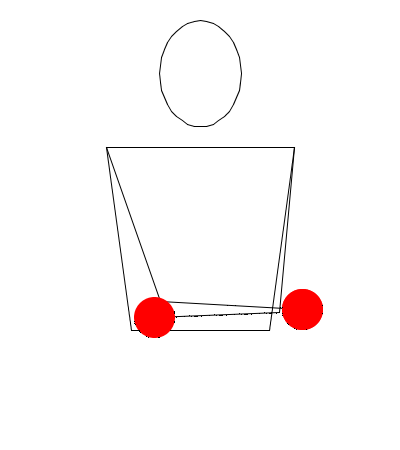
Practice this extensively on both sides. As you likely
noticed, the balls don't actually switch hands, despite the arm movements.
This is an important thing to keep in mind; if you find that the balls are
in fact switching hands, it is a definitive sign that you are doing
something wrong.
Once you have the above step mastered, it is time to add in
the fourth ball. Start with two balls in each hand, and then do the same
exact throws done in the previous step. However, when it comes time to catch
the second throw with your non-dominant hands, there should be, unlike in
the previous step, a ball in that hand. This ball is going to be thrown over
the second and third balls, and will travel in the opposite direction. Once
that ball has been thrown, catch the second ball as you uncross your arms
and then catch the third and fourth balls.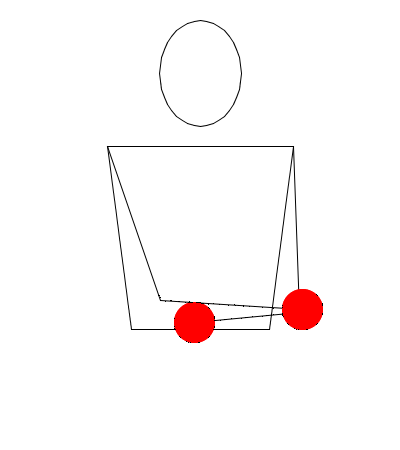
Practice this on both sides. Once you have it mastered, it is
time to add in the fifth throw. Notice in the previous step that when the
third ball is caught, there is already a ball in that hand. For the next
step, your are going to make a throw from that hand in the same direction as
the fourth throw, and recross your hands, catching the fourth throw in your
bottom hand and the fifth throw in your top hand.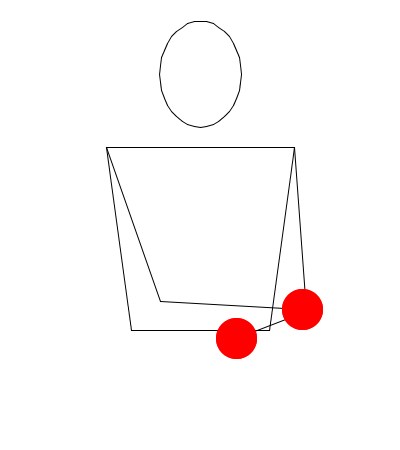
As shown in the animation, practice this on both sides. Now
at this point, you may be able to figure out the rest of the pattern your
self based on the rhythm of this step. However, if you are still confused,
there is one more individual throw to practice. The sixth throw is made to
clear space for the fourth throw to be caught, and it is a full under the
arm throw, going the same direction as the previous two throws.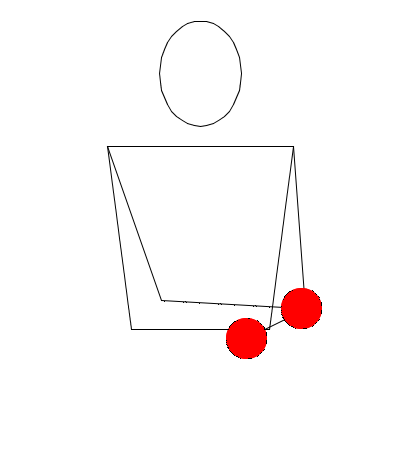
Again, practice this on both sides. By this point, it would
be very surprising if your body didn't naturally pick up the rhythm of the
pattern. However, just in case, the seventh throw is made from your top
hand, and signals the point where the pattern once again changes directions.
After the seventh throw is made, your arms uncross as they make the eighth
and ninth throws.
Running the full Four Ball Mills Mess for extended periods
takes a lot of practice, and is almost, but not quite as difficult as the
Five Ball Cascade. And remember, the balls never switch hands, so always
watch out for that as you practice.
